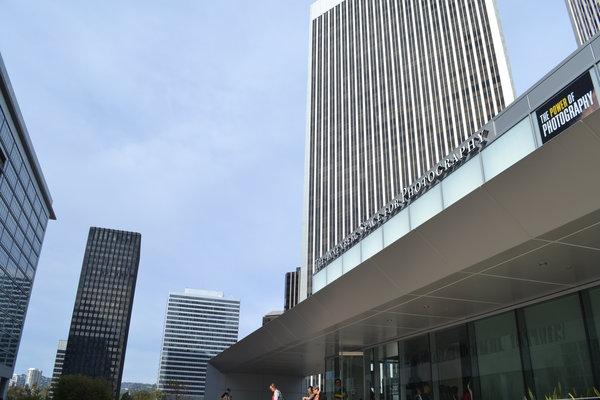Photojournalism exhibit captures range of human experiences

MOVING: The latest exhibit at the Annenberg Space for photography features five themes, a documentary on photojournalism and five themes with hundreds of photos.
January 16, 2014
Some photos capture pure beauty, such as landscapes and water-filled caves, while others attempt to change the world by exposing the public to its flaws, thus swaying public opinion. At the Annenberg Space for Photography in Century City, both types are on display in the latest exhibit, titled “The Power of Photography: National Geographic 125 Years.”
Free of charge and just a short drive away — at the corner of Olympic Boulevard and Avenue of the Stars — the exhibit celebrates the 125th anniversary of an iconic magazine, and offers a wide range of photographic genres and themes through April 27.
It centers around five main themes with evocative names like “Reveal America,” “Witness the Truth of the Moment” and “Connect the Eyes to the Soul,” and features six photographers who have different styles. There are some very touching photographs, along with a documentary that explains what photojournalism is.
The documentary lasts 30 minutes and summarizes photojournalism and its purpose, along with the stories of the six featured artists. Presenting some of their most moving photos, it efficiently provides visitors with an understanding of what they’ll see.
One of the artists is Joel Sartore, who captures endangered animals on blank backgrounds to draw attention to the animal itself. His pictures beg for the conservation of animals worldwide.
Photographer Lynsey Addario travels around the world and photographs places where human rights are not respected. The photos in this part of the exhibit are truly moving, and the inspired expressions on visitors’ faces reflected their value.
One such photograph, plastered to the walls of the exhibit and briefly shown in the documentary, is of a dark, water-filled cave with light beaming through a single hole in its roof onto the silhouette of a person lying in the water.
Another photograph, shown in the documentary, is of a woman whose husband cut her nose off after she tried to run away. These two images, along with several others, particularly attracted the crowd’s attention.
An unexpected bonus is the interaction among the visitors, which was surprising to me. After watching the documentary, I exited the circular center of the building and entered the narrow hallways in which I passed 20 photos with every step. With all this information on all ends, it was helpful to have a loquacious crowd, including many photographers and other experienced photojournalists, around me to focus my attention towards what they considered “photographs I had to see.” Though I did not ask, almost every time I glanced at a photo there was a person who told me a story behind it.
Many visitors, it turned out, had been to the exhibit before, but as stated in the documentary, “have an entirely different experience” each time. First, one gains an understanding of photojournalism, and later visits deepen the experience.
There were only two disappointments. Ironically, no photography is permitted inside, and it was hard to resist taking pictures of these works to revisit later. Also, because there are so many photos, the specialness of each individual one is reduced. These were minor flaws, however.
I really enjoyed the exhibit, partly because of what it contained, and partly because of the other people enjoying it who generally knew a lot about photography and were not hesitant to share their knowledge.
Not many Shalhevet students have been to this museum, but with semester break coming up, now’s a good time to go. It is not every day that something of this value, or anything for that matter, is free in Los Angeles, and people should take advantage.












